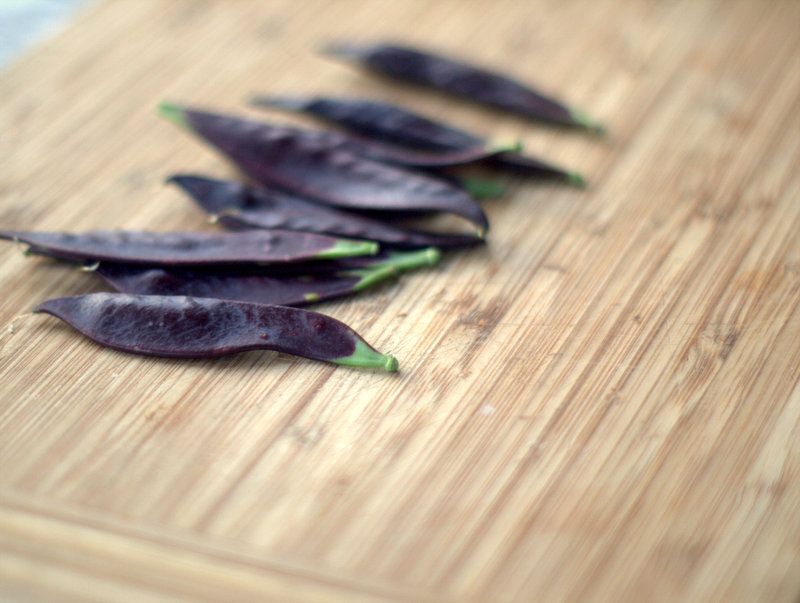
The modest haul from my little community garden plot yesterday. I’ve got the smallest size plot available, 10X10, but so far it’s just big enough. I am so not a serious grower of edibles. I don’t can, pickle, or freeze. There are never massive, bounteous harvests to deal with. It’s all eaten fresh. I don’t get to this garden daily, so I plant things that crop over a long period of time, like these “Blue-Podded Blauwschokkers.” peas from Baker Creek Heirloom Seeds.
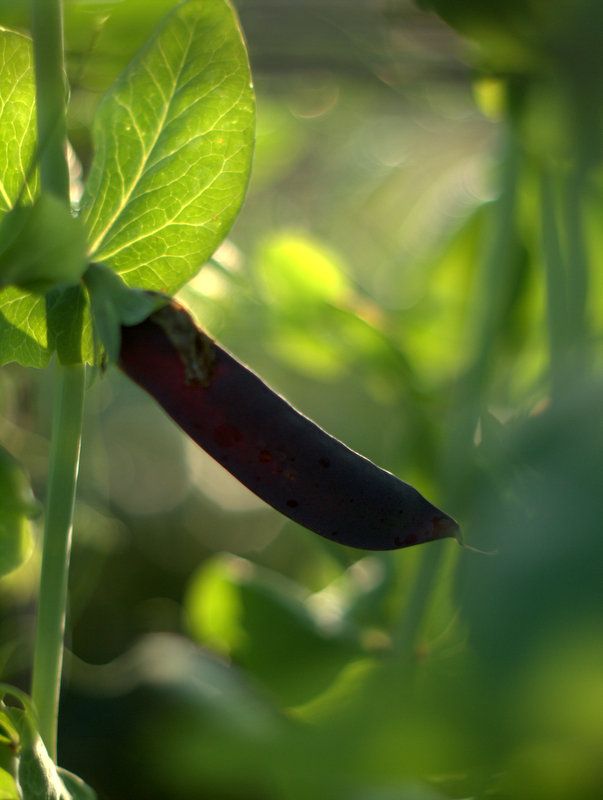
The vegetable garden is where I really get my fix of digging, sowing seeds, planning new things to grow. I love the whoosh of growth vegetables make in a short period of time. Crazy as it sounds, even with vegetables I give good looks strong consideration.
The promise of blue-purple pods was all the inducement I needed to give this variety a try, and it’s proved to be a strong grower.
I dipped a few raw ones in hummus yesterday for lunch. Sooo sweet. It’s a Dutch heirloom reputedly grown for soups, which means allowing the pods to develop peas for shelling and not eating the young pods as I’ve been doing.
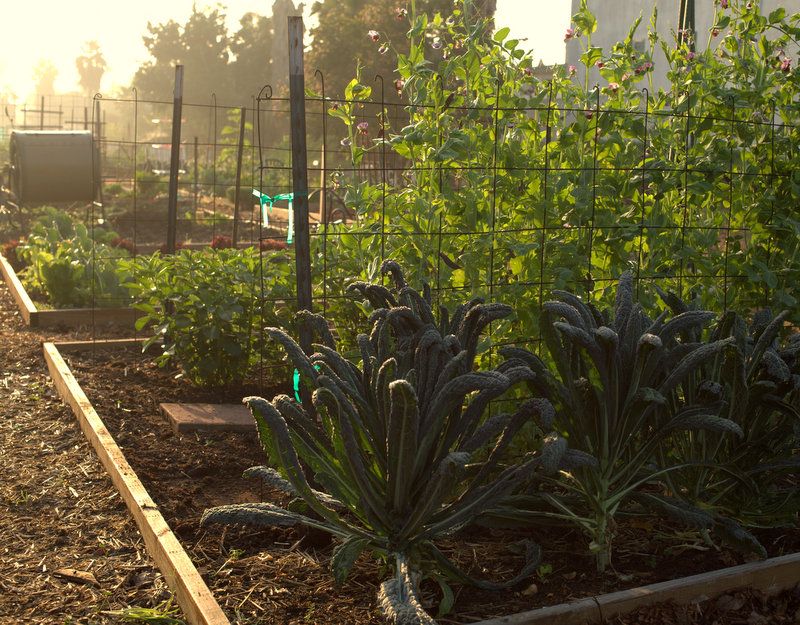
Planted in fall for winter/spring, this year I chose the cool-season vegetables kale, peas, Swiss chard, fava beans, and a few sweet peas (Lathyrus odoratus) for cutting. Which is pretty much what I grew last winter too. There’s many other cool-season vegetables I don’t bother with. I could be growing lettuces, broccoli, cauliflower, cabbage, brussel sprouts. The cabbage family vegetables stay fresh for so long, market to table, that I prefer to buy them and use my plot for other things (like blue-podded peas). The fava beans are just past the stepping stones, halfway up the trellis. (The fava beans are not climbers, but that trellis stays in place year-round.) Fava beans are a lot of work to prepare for eating (as noted here), but the plants are great for the soil and make a good cover crop if you prefer not to sample the beans. It’s a legume that loves the cool growing season of our mild winters and one I rarely see in stores, so a half dozen plants always make the cut for a few special meals in spring. The tall vines in the foreground are the “Blue-Podded Blauwschokkers.”
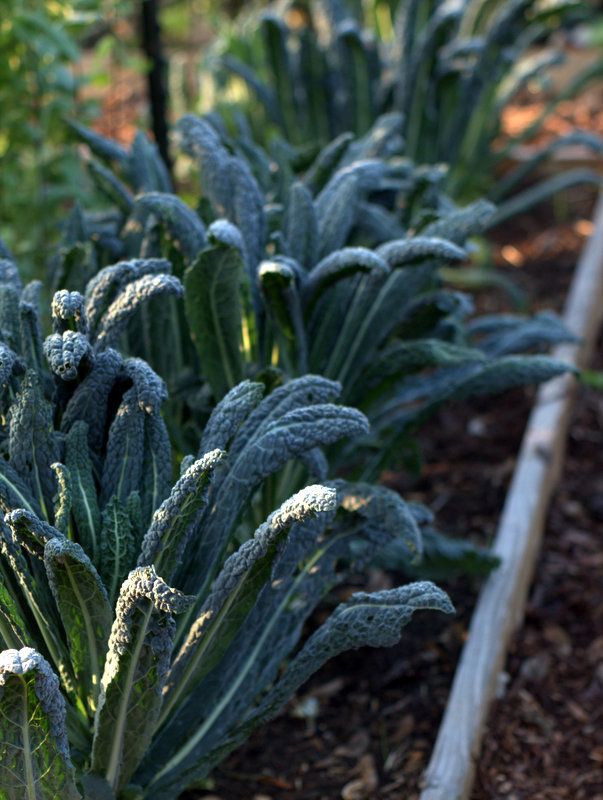
We consume vast amounts of kale, so a row of these is essential. The last bunch of kale lived well over a year in the garden, and leaves were picked several times a week. A few sweet peas for cutting in spring is another essential. I bought the plants late in the year, in December, so they haven’t started to climb yet. I should have started sweet pea seeds in September. Renee Shepherd (Renee’s Garden) has a strong sweet pea listing. In the past I’ve grown her ‘Winter Elegance’ strain, which crops in the shorter day lengths of early spring, but I don’t see it listed on her site currently.
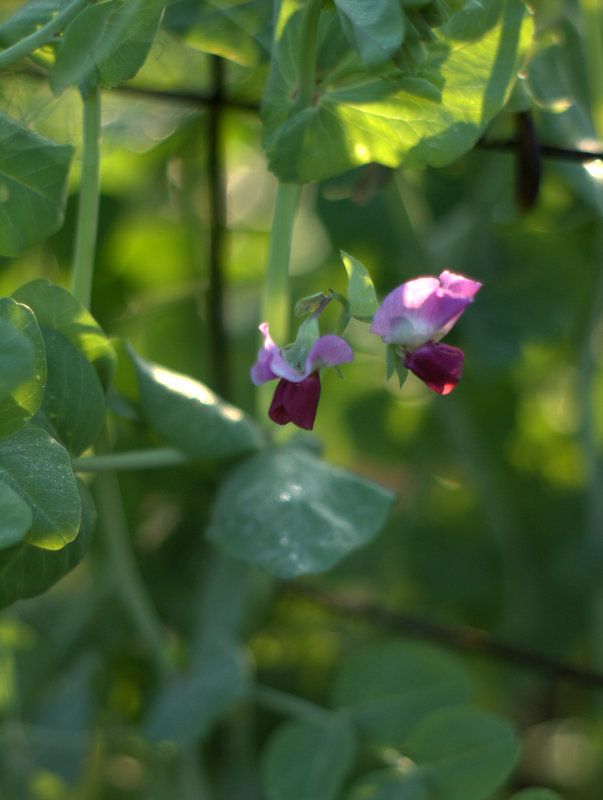
The Blauwschokkers pea vines (Pisum sativum) are almost as ornamental as sweet peas. Their flowers are not the typical white, but this two-tone pink/purple. (It might be appropriate to note here that the ornamental sweet peas, Lathyrus odoratus, are poisonous and should never be used in association with food, such as garnish on plates, for example.)
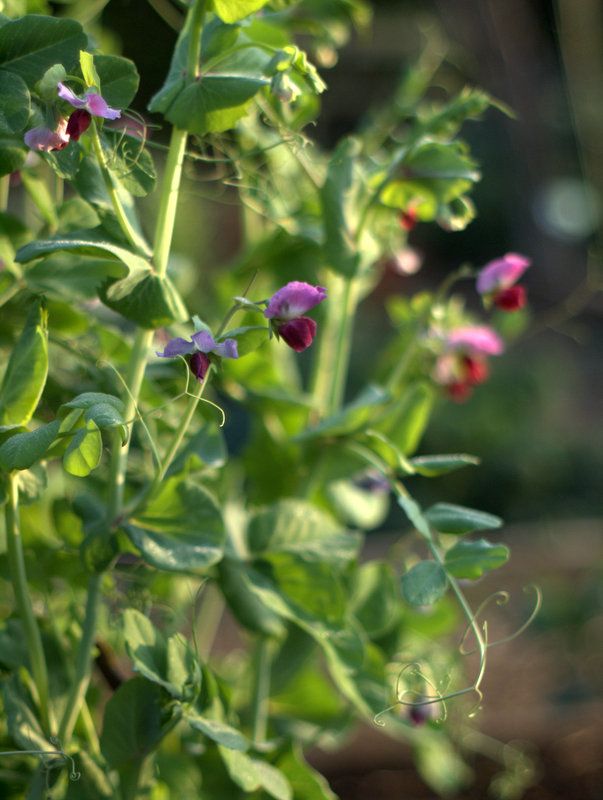
During a road trip to Northern California, I bought the Blauwschokkers on site in the old bank that Baker Creek Heirloom Seeds has taken over for their shop in Petaluma, California.
Of course they offer mail order as well, but you really should see their “seed bank” if you’re in the area.
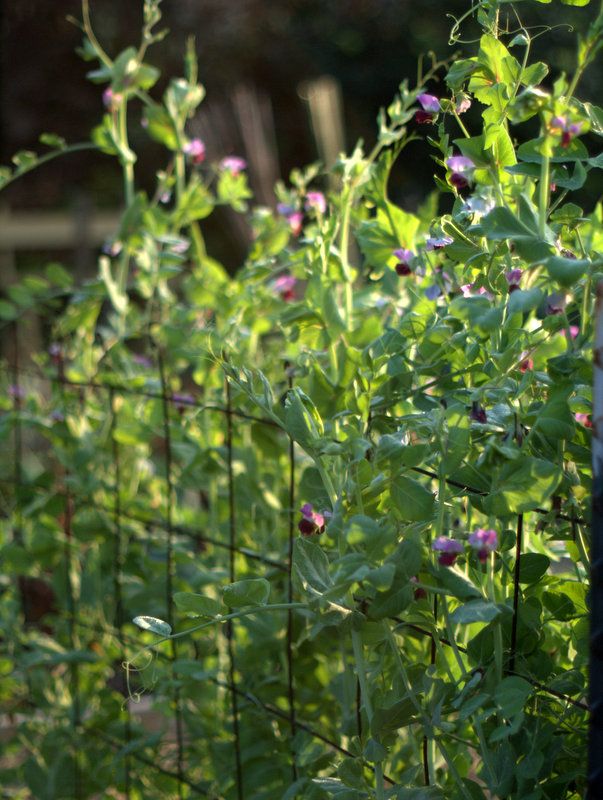
I’ve noticed that a lot of my fellow growers seem inclined to take the winter off. We’re obligated to grow year-round or forfeit our plots, so there’s always something growing in every plot, but the enthusiasm just isn’t the same as for the summer season. But the fall/winter/spring is my very favorite time in the vegetable garden. With just a reasonable amount of winter rain, there’s usually little need for supplemental irrigation. I love summer vegetables but hate spending time in the heat that ripens them. And lots of times during summer I mess up with crucial irrigation.

A lot of local nurseries are discounting 2014 seeds, and maybe yours do the same. Like my Blauwschokkers peas bought in summer 2013, many of the seeds will be perfectly viable for spring/summer 2015, so there’s some good bargains. A search for “vegetable seeds” will bring up dozens of specialist seed companies, all with tempting lists of the tried-and-true as well as the offbeat and blue-podded.

Those blue-podded peas are beautiful, not just the pod itself, but the flower too. I was going to take a break from growing peas this year, but those are tempting. I wish I liked both kale and fava beans more.
Love your plot, it all looks so neat and tidy!
As rusty duck said, it’s so tidy! Whenever I have vegies growing they always look messy and there are dead bits hanging off here and there. Your kale looks great – do you have problems with aphids or white cabbage moths?
@Alison, the one veg I’m growing now that I never do much with is Swiss chard, so I thinned to about 3 plants. I keep thinking I’ll figure out something delicious with Swiss chard, but so far I’ve got nothing!
@RD, that’s because the plants aren’t really full grown yet. The pathways are kept weeded because that’s the law! A couple warnings to weed and, if you don’t comply, bye-bye. There’s a long waiting list for this community garden.
@Amy, it’ll get plenty messy later on. I did have aphids on this kale in fall when they were young plants, but they’ve all disappeared. No cabbage moths on kale so far.
Your photos just identified a pea I saw growing at Sperling Nursery in Calabasas last weekend. I usually grow sugar snap peas but next year I’ll look for these – those flowers put it over the top. BTW, Sperling apparently has a solid bid on the property – from a blasted car dealership.
Nice kale! I ate it in a salad for the first time a few weeks ago. Far better than chard.
I’m trying onions this year–onions and sweet peas–that will make for an odd fragrance combination.
@Kris, oh no!
@Hoov, I just read about a variegated Tuscan kale that I’ll probably blog about. I wonder if it’s general knowledge yet that to eat this kale fresh, you have to massage it in an acid to soften the leaves. Takes like 30-40 seconds, that’s all. I use olive oil and lemon juice for the massage. Without the massage, it’s an entirely different texture!